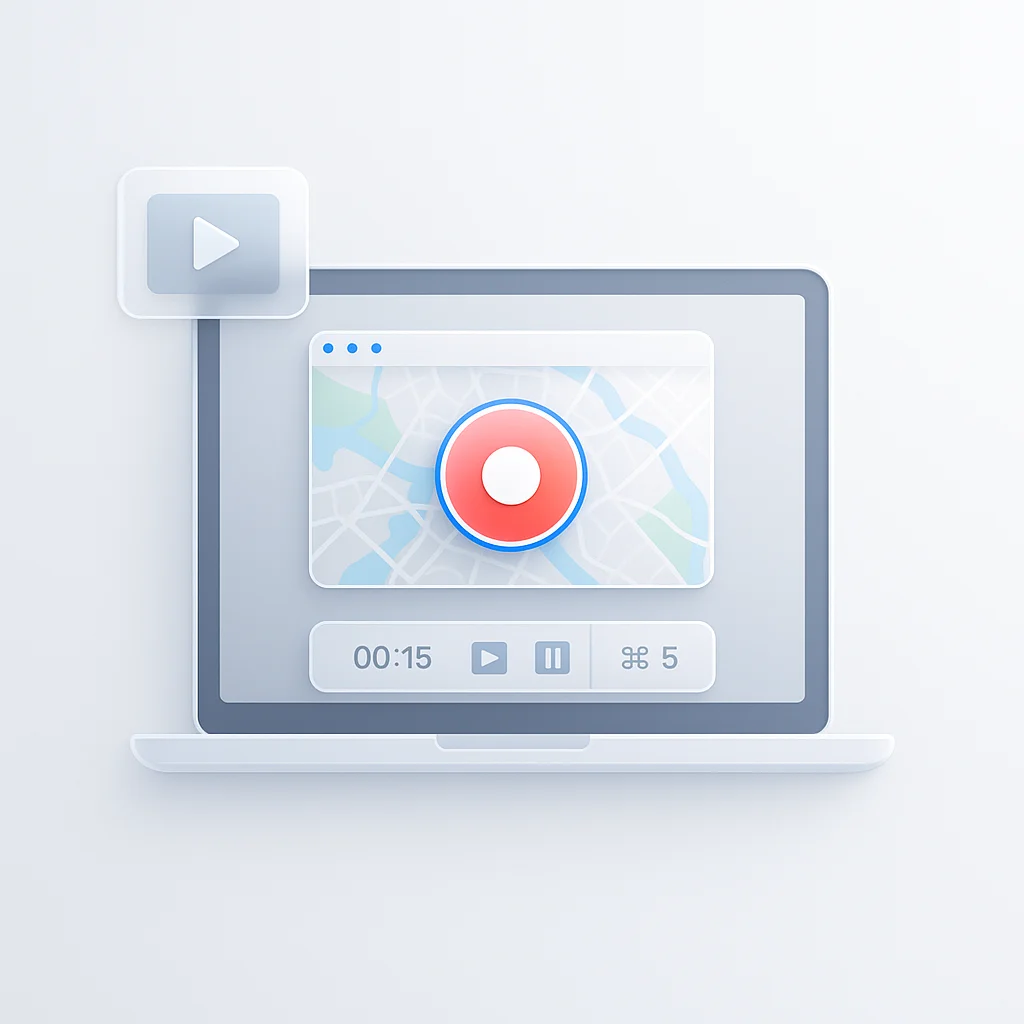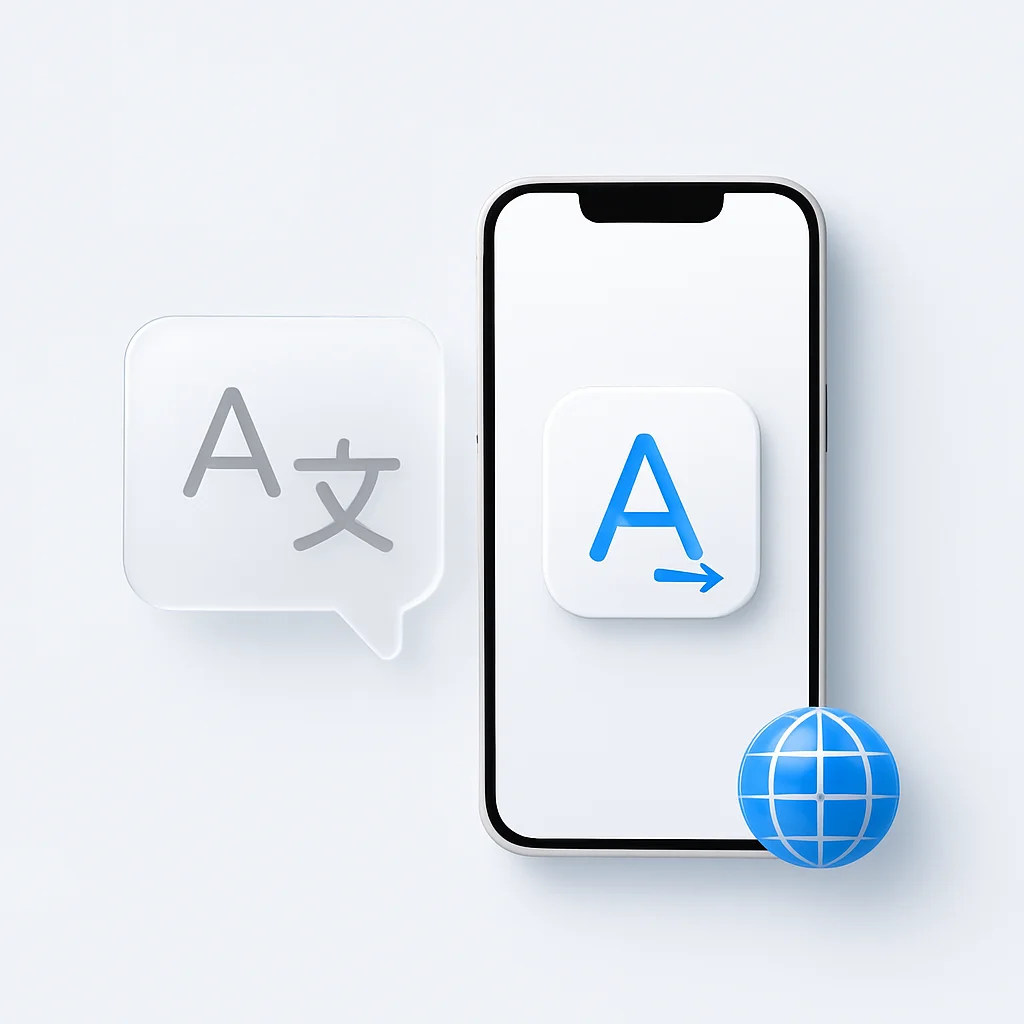Are you tired of getting lost in the vast expanse of Google Maps? Well, fret no more! We’ve got the ultimate guide that will take you by the hand and show you exactly how to capture those perfect screenshots on Google Maps. Say goodbye to confusion and hello to clarity as we provide you with step-by-step instructions and insider tips that will make navigating this digital cartographic wonder a breeze. So, buckle up and get ready to become a master of the map!
Introduction
Taking screenshots on Google Maps has become increasingly important and useful in today’s digital age. With the rising popularity of Google Maps as a primary tool for navigation, travel planning, and location sharing, knowing how to effectively capture screenshots can greatly enhance your experience and provide valuable reference points.
Google Maps offers a wealth of information and features, including detailed maps, satellite imagery, real-time traffic updates, and points of interest. By taking screenshots, you can preserve specific map views, directions, or points of interest for future use, whether it’s for personal reference, sharing with others, or creating custom maps.
In this comprehensive guide, we will walk you through the process of taking screenshots on Google Maps, providing you with step-by-step instructions, tips, and tricks to ensure you capture the desired map details accurately. Whether you’re an avid traveler, a frequent commuter, or simply someone who relies on Google Maps for daily navigation, mastering the art of taking screenshots will empower you to make the most of this powerful tool.
Understanding Google Maps Screenshots
What is a screenshot?
A screenshot is a still image that captures the exact visual representation of a particular screen or application at a given moment. When it comes to Google Maps, taking a screenshot allows you to freeze a specific map view, including markers, routes, and other relevant information, into a static image file.
Purposes of taking screenshots on Google Maps
There are numerous purposes for taking screenshots on Google Maps, each catering to different needs and scenarios. Some common purposes include:
- Sharing directions: By capturing a screenshot of the route, turn-by-turn directions, or specific landmarks on Google Maps, you can easily share them with friends, family, or colleagues to guide them to a particular location.
- Saving locations: Screenshots can be valuable for preserving the details of a specific location or point of interest on Google Maps. Whether it’s a restaurant, hotel, or scenic spot, taking a screenshot ensures you have a visual reference for future visits or recommendations.
- Creating custom maps: Screenshots serve as building blocks for creating custom maps. By capturing different map views and combining them, you can create personalized maps for events, and travel itineraries, or highlight specific areas of interest.
Benefits of using screenshots on Google Maps
Utilizing screenshots on Google Maps offers several benefits, including:
- Offline reference: Screenshots serve as offline references, allowing you to access map details even when you don’t have an internet connection. This can be particularly useful in areas with poor connectivity or when traveling to remote locations.
- Visual aid for planning: Screenshots provide visual aids for trip planning, allowing you to mark and highlight specific points of interest, attractions, or landmarks. This helps you visualize your itinerary, compare options, and make informed decisions about your travel plans. For businesses planning delivery routes or logistics operations, combining Google Maps screenshots with best route planning software can optimize efficiency and reduce operational costs.
- Easy sharing and collaboration: With screenshots, you can easily share precise locations, directions, or custom maps with others. Whether it’s sharing travel tips, meeting points, or recommendations, screenshots make communication and collaboration more effective.
To plan efficient routes with Google Maps, consider using its robust route planning tools or if you are into logistic business you can also use other route optimization software specially designed to deliver multiple packages at the fastest speed.
- To plan efficient routes with Google Maps, consider using its robust route planning tools. These features allow you to pinpoint optimal paths, avoid traffic, and highlight specific stops, ensuring that your navigation is both seamless and time-saving.
How to Take a Screenshot on Google Maps (Mobile)
Taking screenshots on Google Maps is a seamless process on mobile devices, whether you’re using an Android or iOS device. Let’s explore the step-by-step instructions for capturing screenshots on both platforms:
Android Devices:
Android devices offer multiple methods for taking screenshots on Google Maps. Here are the different options available:
Using physical buttons:
- Locate the specific area of the map you want to capture.
- Simultaneously press the Power button and the Volume Down button on your Android device.
- Hold the buttons for a moment until you see a visual confirmation, such as a brief screen animation or a shutter sound, indicating that the screenshot has been taken.
- Access your captured screenshot by swiping down the notification shade and tapping on the screenshot preview.
Utilizing built-in gestures:
- Ensure that your Android device supports gesture-based screenshot capture.
- Open Google Maps and navigate to the desired map view.
- Swipe up from the bottom of the screen to access the navigation bar.
- Look for the “Screenshot” icon or option on the navigation bar and tap on it.
- Your device will capture the screenshot and provide a visual confirmation.
iOS Devices:
iOS devices, such as iPhones and iPads, have a dedicated functionality for capturing screenshots, making it quick and straightforward:
Using the physical buttons:
- Open Google Maps and navigate to the desired map location.
- Locate the Power button (located on the side or top edge of your device) and the Home button (located on the front).
- Simultaneously press the Power button and the Home button at the same time.
- You will see a flash on the screen or hear a camera shutter sound, indicating that the screenshot has been captured.
- Access your screenshot by going to the Photos app and locating it in the Camera Roll or Screenshots album.
It’s important to note that the exact process of taking screenshots on Android and iOS devices may vary slightly depending on the specific device model and operating system version. However, the methods outlined above should work for the majority of Android and iOS devices.
How to Take a Screenshot on Google Maps (Computer)
Capturing screenshots on Google Maps using a computer is a convenient way to save and reference map views. The process may differ slightly between Windows and Mac operating systems. Let’s explore the step-by-step instructions for taking screenshots on both platforms:
Windows:
Using the Print Screen (PrtScn) key:
- Navigate to the specific map view you want to capture on Google Maps.
- Locate the Print Screen (PrtScn) key on your keyboard. It is typically located in the upper-right corner or may be labeled as “PrtScn” or “PrtSc”.
- Press the Print Screen key to capture a screenshot of the entire screen, including the Google Maps window.
- Open an image editing software such as Paint or Microsoft Word.
- Paste the screenshot by pressing Ctrl + V or right-clicking and selecting the “Paste” option.
- Save the screenshot to your desired location by selecting “Save” from the file menu.
Using the Snipping Tool or Snip & Sketch:
- Open the Google Maps window to the desired map view.
- Search for the Snipping Tool in the Start Menu or use the search function.
- Open the Snipping Tool and click on “New” to initiate the screenshot capture.
- Use the cursor to select the area of the map you want to capture. You can choose to capture a rectangular or free-form shape.
- Once the desired area is selected, release the mouse button.
- The captured screenshot will open in the Snipping Tool, where you can annotate or save it to your preferred location.
Mac:
Using keyboard shortcuts:
- Navigate to the map view you want to capture on Google Maps.
- Press Command + Shift + 3 to capture a screenshot of the entire screen, including the Google Maps window.
- The screenshot will be automatically saved as a file on your desktop with a timestamp.
Using the Grab utility:
- Open the “Grab” utility on your Mac. It can be found in the Utilities folder, which is located within the Applications folder.
- In the Grab menu, select “Capture” and choose either “Selection,” “Window,” or “Screen” depending on the area you want to capture.
- If you choose “Selection” or “Window,” use the cursor to select the desired area on the Google Maps window.
- Once the screenshot is captured, it will open in a new window. From there, you can save it to your preferred location.
Additional Tips and Tricks for Google Maps Screenshots
Capturing screenshots on Google Maps is not only about the basic process; some additional tips and tricks can enhance the quality and effectiveness of your screenshots. Let’s explore some useful tips and alternative methods for taking Google Maps screenshots:
Tips for capturing specific map details:
Including or excluding labels, markers, or routes:
- To include labels, markers, or routes in your screenshot, make sure they are visible on the map before capturing the screenshot.
- If you want a clean and label-free screenshot, you can hide the labels by tapping on the “Layers” button in the Google Maps interface and deselecting the appropriate options.
- Similarly, you can deselect specific markers or routes by tapping on them and choosing the “Hide” or “Remove” option.
Adjusting zoom levels for capturing desired map details:
- Zoom in or out on the map to adjust the level of detail you want to capture in your screenshot.
- Ensure that the desired locations, landmarks, or routes are visible and properly centered within the frame before capturing the screenshot.
- Experiment with different zoom levels to find the perfect balance between capturing the necessary details and maintaining a clear and comprehensive view.
Alternative methods for capturing screenshots:
Third-party apps or extensions:
- Explore third-party apps or browser extensions that provide additional screenshot capabilities specifically designed for Google Maps.
- These tools may offer advanced features such as capturing specific areas or adding annotations directly within the Google Maps interface.
- Some popular options include Lightshot, Awesome Screenshot, or Nimbus Screenshot.
Tools for capturing scrolling or panoramic screenshots:
- For capturing wider map views or creating panoramic screenshots, consider using tools designed to capture scrolling or extended screen areas.
- These tools allow you to capture a series of screenshots as you scroll through the map, and then stitch them together to create a seamless, panoramic image.
- Examples of such tools include Microsoft’s Snip & Sketch (Windows) or Snagit (Windows and Mac), which provide scrolling screenshot functionality.
Best Practices for Using Google Maps Screenshots
When using Google Maps screenshots, it is essential to follow best practices to respect copyright and intellectual property rights. Additionally, proper citation ensures accurate attribution of the map data and acknowledges the source. Let’s explore the best practices for using Google Maps screenshots:
Address copyright and usage guidelines:
Potential copyright restrictions:
- Inform users that Google Maps and its content, including screenshots, may be subject to copyright protection.
- Emphasize that reproducing, distributing, or modifying copyrighted material without permission may infringe upon the rights of the copyright holder.
- Note that Google’s terms of service and usage policies apply to the usage of Google Maps and its features.
Respecting intellectual property rights:
- Advise users to respect intellectual property rights and obtain proper permissions if they intend to use screenshots for commercial purposes or in situations where copyright may apply.
- Encourage users to seek permission from relevant copyright holders or consider alternative sources if needed.
Highlight the importance of proper citation:
Guidelines for citing Google Maps screenshots:
- Explain the importance of proper citation when using Google Maps screenshots in different contexts, such as academic papers, presentations, or online publications.
- Guide on citing the source of the map data, which can typically be attributed to “Google Maps” or “Google LLC.”
- Include the date or version of Google Maps used for capturing the screenshot, if applicable, to maintain accuracy and ensure reproducibility.
Attribution and acknowledgment:
- Encourage users to attribute Google Maps as the source of the map data clearly and visibly, such as by including a caption or acknowledgment.
- Mention that the citation should be placed alongside or below the screenshot, allowing readers or viewers to easily identify the source.
Sharing and Using Google Maps Screenshots
Google Maps screenshots serve as valuable visual references that can be shared and utilized in various ways. Let’s explore different methods for sharing and using captured screenshots, along with tips for enhancing their visual appeal and practicality:
Different ways to share and utilize screenshots:
Uploading screenshots to cloud storage or image-sharing platforms:
- Consider uploading your Google Maps screenshots to cloud storage services such as Google Drive, Dropbox, or OneDrive.
- These platforms allow easy access and sharing of your screenshots with others, whether it’s through direct links, shared folders, or collaboration features.
- Alternatively, you can upload your screenshots to image-sharing platforms like Imgur or Flickr, where you can create albums or galleries for easy sharing and embedding.
Incorporating screenshots into documents, presentations, or blog posts:
- Screenshots can be embedded into various documents, presentations, or blog posts to illustrate specific locations, directions, or points of interest.
- Use image editing software or presentation tools to resize, crop, add light effect, or annotate your screenshots to better align with the content and enhance clarity.
- Consider adding captions or annotations to highlight key information within the screenshot.
Tips for enhancing the visual appeal and readability of screenshots:
Maintain clarity and legibility:
- Ensure that the captured screenshots are clear and easily readable by checking the resolution and zoom level.
- Adjust the brightness, contrast, or color levels if necessary to enhance visibility, especially if the screenshot contains dark or low-contrast elements.
Consider aesthetics and composition:
- Pay attention to the composition and framing of the screenshot to create a visually appealing image.
- Remove unnecessary UI elements or clutter that may distract from the main focus of the screenshot.
- Experiment with different angles, zoom levels, or map views to capture visually interesting and informative screenshots.
Using screenshots for offline navigation or as reference material during travels:
The offline reference during navigation:
- Save the captured screenshots on your mobile device or print them out to have offline access to map details, directions, or specific locations.
- This can be particularly useful when traveling to areas with limited or no internet connectivity, ensuring you have a reliable reference even without an active data connection.
Reference material for travel planning:
- Use the screenshots as reference material when planning trips, creating itineraries, or exploring new destinations.
- Arrange and organize the screenshots according to specific areas, attractions, or points of interest to easily reference them during your travels.
Advanced Screenshot Techniques
Capturing screenshots on Google Maps can go beyond the basic methods. Advanced features and techniques can provide additional functionality and creative options. Let’s explore some advanced screenshot techniques for Google Maps:
Explore advanced features and techniques for capturing screenshots on Google Maps:
Utilizing third-party apps or extensions to annotate or edit screenshots:
- Explore third-party apps or browser extensions that offer advanced editing and annotation features specifically for Google Maps screenshots.
- These tools may allow you to add text, draw shapes, highlight areas, or blur sensitive information within the screenshot.
- Examples of such tools include Skitch, Evernote, or Greenshot.
Using specialized tools to capture screenshots in different formats:
- Consider using specialized tools to capture screenshots in formats other than the traditional image file (e.g., PNG, JPEG).
- Some tools offer the ability to capture screenshots in animated formats like GIFs or even record video screencasts of your interactions with Google Maps.
- Explore tools like LICEcap, ScreenToGif, or OBS Studio for capturing dynamic screenshots or creating video demonstrations.
Techniques for capturing screenshots of specific map layers or overlays:
Satellite imagery:
- To capture screenshots of satellite imagery, navigate to the desired location on Google Maps and enable the satellite view.
- Adjust the zoom level and center the map on the area of interest.
- Use the standard screenshot methods discussed earlier to capture the satellite imagery.
Traffic information:
- Capture screenshots of live traffic information by zooming in to the desired location and enabling the traffic layer on Google Maps.
- Ensure that the traffic flow and incidents are visible on the map before capturing the screenshot.
- Take the screenshot using the preferred method outlined earlier.
Terrain views:
- To capture screenshots of terrain views, switch to the terrain layer on Google Maps.
- Zoom in or out to adjust the level of detail you want to capture.
- Capture the screenshot using the appropriate method discussed previously.
- By exploring advanced features, utilizing third-party tools, and capturing specific map layers or overlays, you can expand your capabilities and create more dynamic and customized Google Maps screenshots.
Legal Considerations and Privacy
Taking and sharing Google Maps screenshots comes with legal and privacy considerations that should be addressed responsibly. Let’s discuss some key points to consider:
Legal implications of taking and sharing Google Maps screenshots:
Highlight privacy concerns:
- Emphasize the importance of respecting personal information and locations when sharing Google Maps screenshots.
- Encourage users to be mindful of sensitive data that may be visible in the screenshot, such as addresses or personally identifiable information (PII).
Protecting sensitive information when sharing screenshots publicly:
- Advise users to review and carefully crop or edit the screenshot to remove any sensitive information before sharing it publicly.
- Consider using image editing software or built-in tools to blur or pixelate sensitive information within the screenshot.
Addressing the terms of service and usage policies of Google Maps:
- Familiarize yourself with Google Maps’ terms of service:
- Direct users to review and understand the terms of service and usage policies of Google Maps regarding the capture, use, and sharing of screenshots.
- Inform users that compliance with these terms is essential to ensure responsible and lawful use of Google Maps and its features.
Examples and Use Cases
Google Maps screenshots can be utilized in various real-world scenarios to enhance planning, communication, and creativity. Let’s explore some practical examples and use cases for Google Maps screenshots:
Real-world examples and use cases for Google Maps screenshots:
Planning a road trip itinerary:
- Use Google Maps screenshots to visually map out the route for a road trip, including key stops, attractions, and scenic viewpoints.
- Capture screenshots of each leg of the journey to create an itinerary that provides a clear visual representation of the entire trip.
Sharing precise directions or meeting locations:
- Capture and share screenshots of specific locations, routes, or meeting points to provide accurate directions to friends, colleagues, or event attendees.
- Highlight landmarks or notable features within the screenshot to ensure easy navigation and identification.
Creating custom maps for events, tours, or marketing purposes:
- Utilize Google Maps screenshots to create customized maps for events, tours, or marketing campaigns.
- Combine multiple screenshots to highlight specific areas, attractions, or points of interest, and add annotations or descriptions to create informative and visually appealing maps.
Future Developments and Updates
Google Maps continues to evolve and introduce new features and functionalities to enhance user experiences. Here are some aspects to consider regarding future developments and updates:
Recent or upcoming updates to the Google Maps interface or screenshot functionalities:
- Stay up-to-date with the latest updates to the Google Maps interface, as these changes may introduce new screenshot functionalities or improve existing features.
- Keep an eye on Google’s official announcements, blog posts, or support forums for information on recent updates to the Google Maps application.
Emerging technologies or features that could enhance the screenshot experience on Google Maps:
- As technology advances, new features and tools may be introduced to enhance the screenshot experience on Google Maps.
- Explore emerging technologies such as augmented reality (AR) or virtual reality (VR) that could potentially provide immersive and interactive ways to capture and share map screenshots.
Conclusion
In this comprehensive guide, we have explored the ins and outs of taking screenshots on Google Maps, equipping you with the knowledge and skills to capture and utilize map images effectively. Let’s summarize the key points covered and emphasize the benefits and practical applications of taking screenshots on Google Maps:
Summarizing the key points:
Throughout this guide, we discussed various aspects related to taking screenshots on Google Maps. We began by understanding the importance of screenshots in capturing still images of the current map view, highlighting their usefulness in sharing directions, saving locations, and creating custom maps. We explored the step-by-step instructions for taking screenshots on mobile devices, both on Android and iOS, as well as on computers running Windows or Mac operating systems. Advanced screenshot techniques were also discussed, including utilizing third-party apps for annotation or editing, capturing screenshots in different formats, and focusing on specific map layers or overlays. Legal considerations and privacy were addressed, emphasizing the need to respect copyright, protect sensitive information, and adhere to Google Maps’ terms of service. Finally, we explored the possibilities of sharing and utilizing screenshots, enhancing their visual appeal, and using them for offline navigation or as reference material during travels.
Emphasizing the benefits and practical applications:
Taking screenshots on Google Maps offers a range of benefits and practical applications. By capturing screenshots, you can preserve specific map views, directions, or points of interest for future reference. Screenshots serve as valuable visual aids for trip planning, sharing precise locations or meeting points with others, and creating custom maps for events or marketing purposes. They provide offline references, ensuring you can access map details even without an internet connection. Additionally, screenshots facilitate effective communication, collaboration, and sharing of information with friends, family, colleagues, or event attendees.
Encouraging exploration and enhancement:
We encourage you to explore the possibilities that taking screenshots on Google Maps offers. Experiment with different techniques, tools, and features to enhance your screenshot experience. Consider incorporating annotations, editing, or utilizing specialized apps and extensions to customize your screenshots. Continuously stay updated with Google Maps’ interface updates and emerging technologies that could further enhance the screenshot experience.






